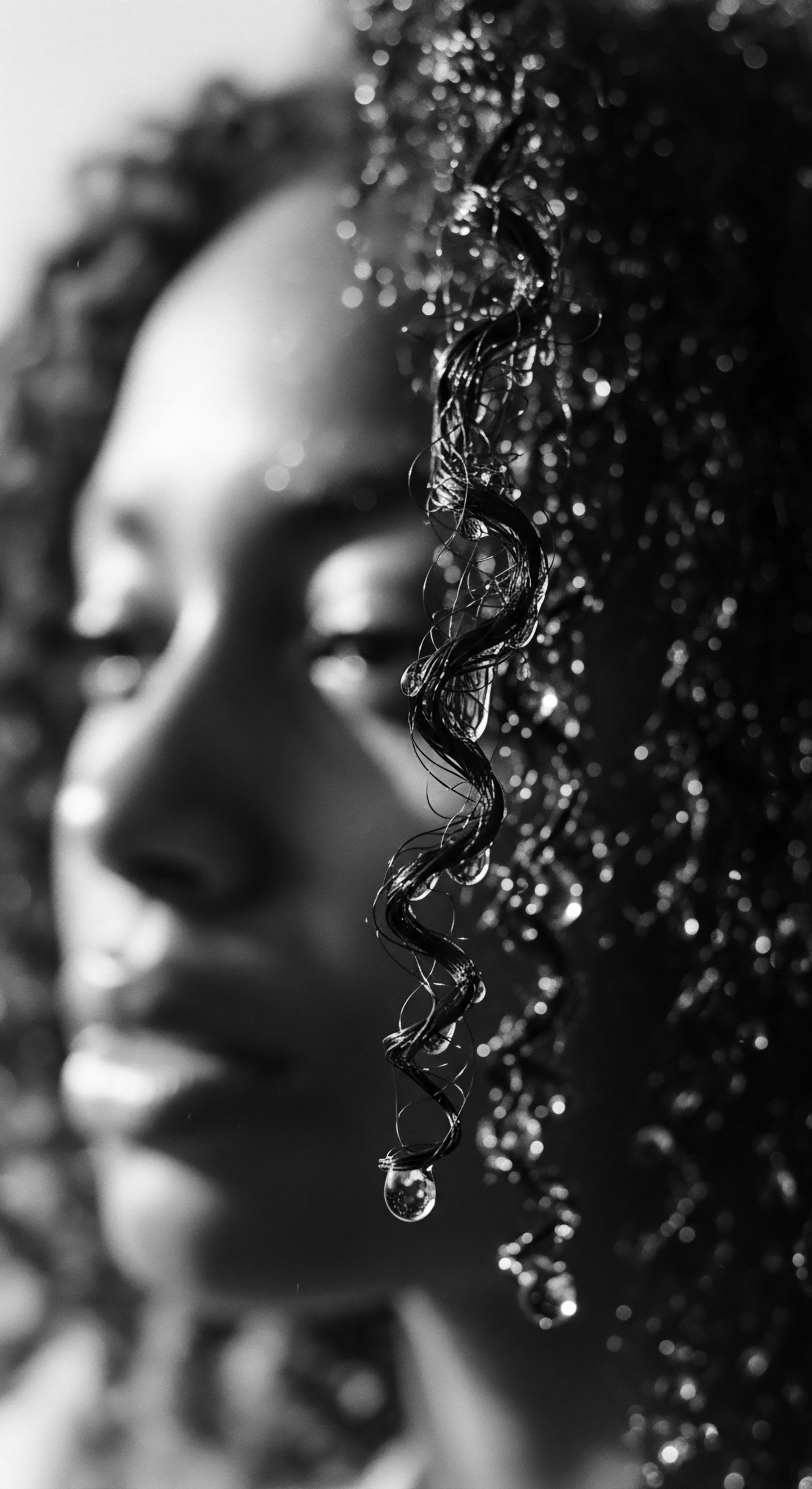
What minerals in red clay traditionally offer sun shielding for textured hair?
Red clay, rich in iron oxides, traditionally shielded textured hair from the sun by forming a physical barrier and absorbing harmful rays, a practice deeply rooted in ancestral care.

How did ancient sun exposure influence textured hair evolution?
Ancient sun exposure led textured hair to evolve as a vital shield against intense UV radiation, deeply shaping our hair heritage.

How did clay rituals preserve hair heritage?
Clay rituals preserved textured hair heritage by offering natural cleansing, conditioning, and protection rooted in ancestral wisdom.

What traditional African practices guarded textured hair from sun exposure?
Traditional African practices guarded textured hair from sun through natural oils, specific hairstyles, and symbolic head coverings, embodying a rich heritage of environmental adaptation.

How did ancient Africans shield their hair from sun?
Ancient Africans shielded textured hair from the sun using its inherent coil structure, nourishing natural oils, and protective cultural styles.

What is the cultural significance of traditional oils in textured hair sun protection?
Traditional oils hold deep cultural meaning in textured hair sun protection, embodying generations of ancestral knowledge and resilient care practices.

What Ancient African Practices Inform Modern Textured Hair Sun Care?
Ancient African practices inform modern textured hair sun care through ancestral wisdom, traditional ingredients, and protective styles.

Which cultures used clay for cleansing textured hair?
Many ancient cultures, including those in North Africa, Mesoamerica, and Indigenous North America, used various clays for cleansing textured hair.

Did textured hair evolve for sun protection?
Yes, textured hair, especially tight curls, evolved as a natural shield to regulate head temperature and protect the brain from solar radiation, a testament to ancestral adaptation.

What historical significance do natural cleansing practices hold for African hair heritage?
Natural cleansing practices hold profound historical meaning for African hair heritage, symbolizing identity, community, and reverence for ancestral wisdom.

What is the scientific basis for hair’s natural sun protection and heritage rituals?
Textured hair's melanin and structure provide natural sun protection, complemented by heritage rituals like oiling and headwraps.

How does ancestral hair care relate to UV defense for textured strands?
Ancestral hair care for textured strands relates to `UV defense` through intrinsic structural adaptations, the use of `natural ingredients` forming protective barriers, and `traditional styling` and `head coverings` shielding from solar radiation.

How did ancient communities prepare clay for textured hair?
Ancient communities refined earth's clays, mixing them with natural elements, to cleanse, define, and protect textured hair, a practice steeped in heritage.

Can modern science validate clay’s traditional hair benefits for textured strands?
Modern science affirms clay's traditional cleansing and conditioning benefits for textured hair, echoing centuries of ancestral wisdom.

What historical evidence supports clay’s use for textured hair?
Historical evidence points to ancient cultures using clays like rhassoul and bentonite for cleansing and styling textured hair, reflecting a deep ancestral heritage.

Can clay truly nourish scalp health for textured strands?
Clay can indeed nourish scalp health for textured strands, carrying forward a rich heritage of ancestral cleansing and protective practices.

What ancestral wisdom about textured hair care persists today?
Ancestral wisdom about textured hair care persists through practices like protective styling, natural oil use, and holistic wellness approaches, all deeply rooted in cultural heritage.

What historical significance do clay hair rituals hold for Black heritage?
Clay hair rituals are an enduring heritage, linking Black communities to ancestral practices for textured hair care and cultural identity.

